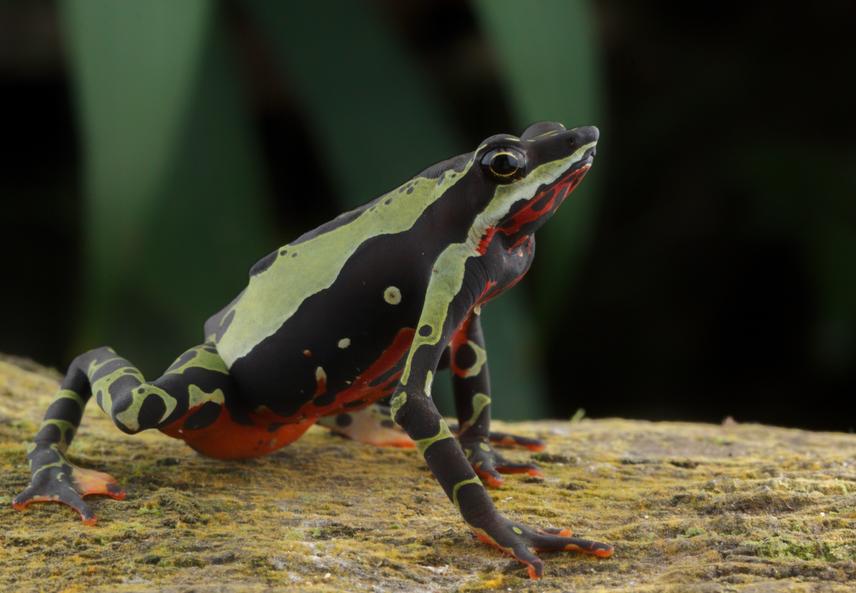Carlos Alfredo Vilca Alzamora
Amphibians worldwide have been in a continuous decline, especially in the Americas since the arrival of the Batrachochitrium dendrobatidis (Bd) fungi. Alongside habitat loss and climate change, these are the most threatening factors for this group. In order to successfully rescue and preserve these endangered species, both ex-situ and in-situ conservation efforts are required. This project is part of an in-situ conservation initiative for Atelopus pulcher (Boulenger, 1882). Atelopus is one of the most endangered genus within amphibians, with more than half of the reported species considered to be threatened with extinction. Ex-situ breeding programs have been developed to assess this crisis. However, the success of such efforts, including posterior reintroductions and its positive effect in wild populations, depends on the acquisition of fundamental data about the species’ ecology and population dynamics.

Female Atelopus pulcher. ©Angel Chujutalli.
In Peru, knowledge regarding Atelopus’ ecology is very limited. This work aims to address this lack of information focusing on A. pulcher. Wild populations of this species have been suffering a steady decline, mainly because of an ongoing reduction in the extent and quality of its habitat. Studies are urgently needed to evaluate its population density over time to determine current and future trends. Additionally, collecting biotic and abiotic data related to its autecology will allow us to identify the factors behind possible variations in their abundance throughout the year. Moreover, ecological data will allow us to develop better ex-situ management protocols with more detailed and certain information about abiotic factors like temperature and humidity that influence the wellbeing of individuals and its reproductive success. Establishing a baseline about the population dynamics of the species would allow for the development of better in-situ conservation strategies. Notably, this would be the first ecological study in regards to the Atelopus genus in Peru.
Finally, in order to increase the current number of A. pulcher populations the project aims to identify potential reintroduction sites with the help of our local stakeholders, involving NGOs and private conservation areas. Stakeholders are currently interested in the reintroduction of the species, as well as engaging in workshops involving local communities. These workshops will focus on raising awareness about the amphibians present on the area, their threats and importance in the ecosystem, with focus on A. pulcher.